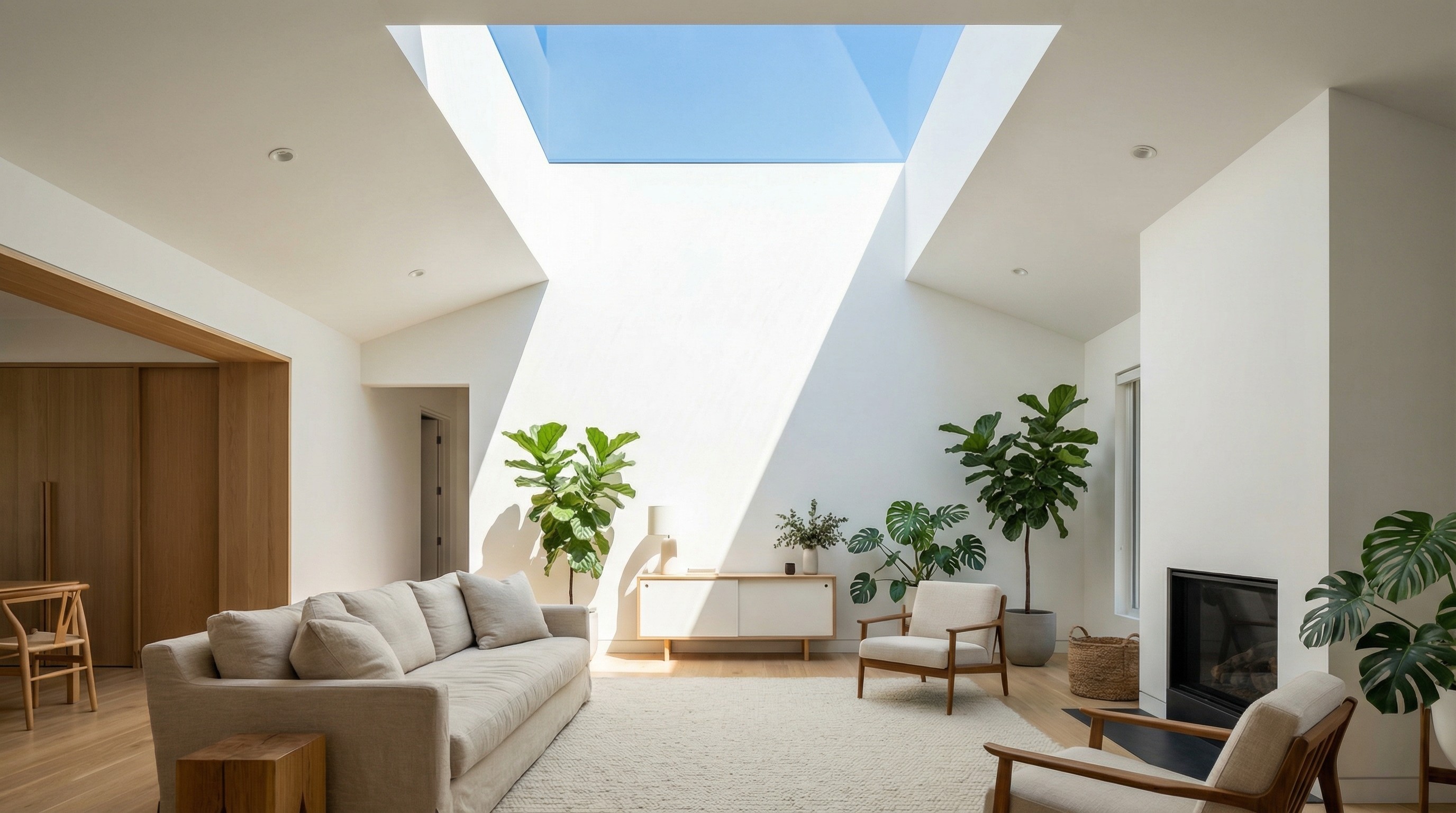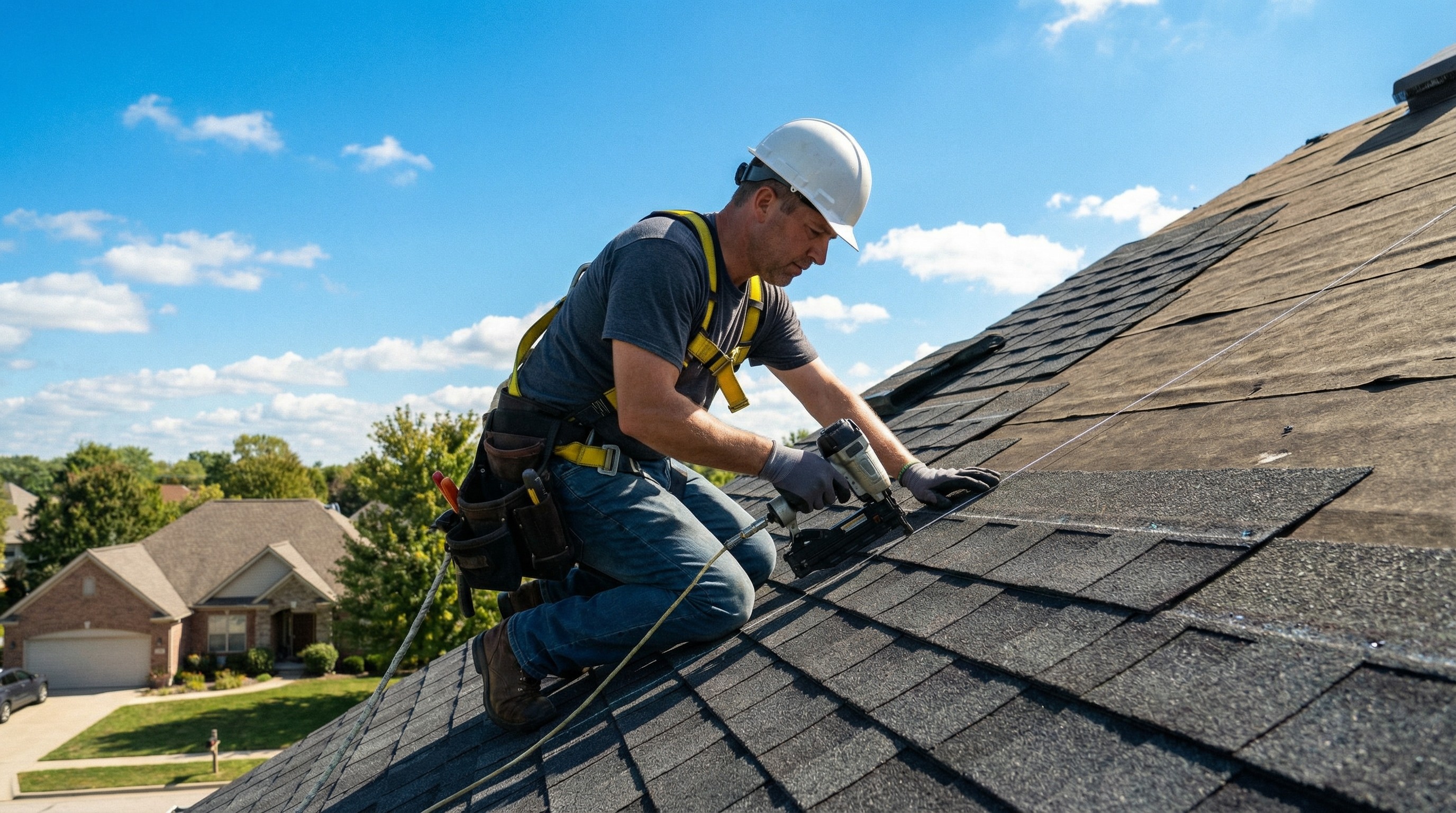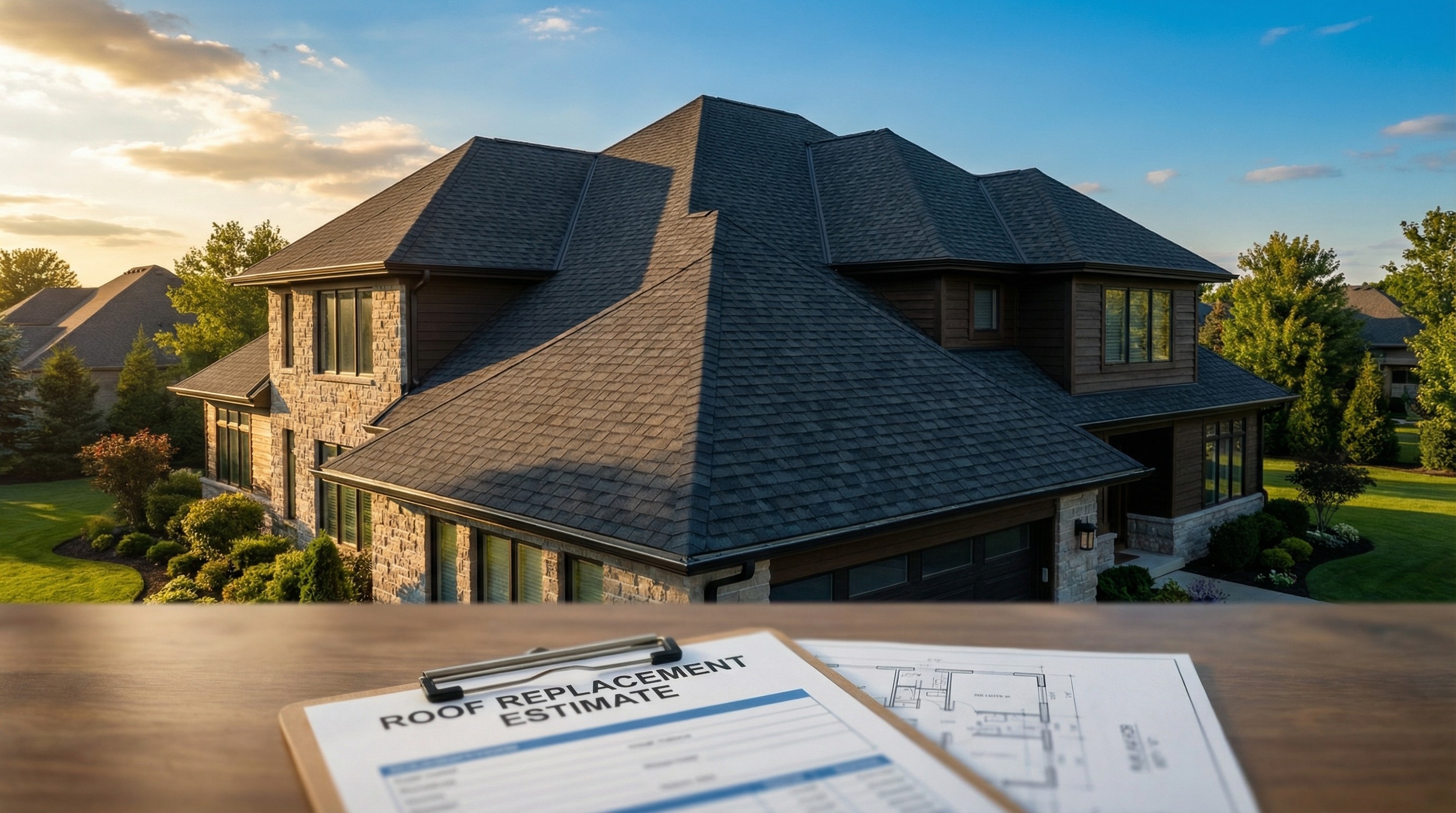A single skylight can transform a dark, cramped room into a bright, open space. While the concept is straightforward, choosing and installing the right skylight involves several important considerations that can make or break your investment.
But choosing the right skylight and getting it installed properly involves more decisions than most homeowners expect. This guide covers the main types of skylights, what they cost, common problems to watch for, and how to find an installer who will do the job right.
What Are Skylights?
A skylight is simply a window in your roof. Instead of looking out at your neighbor's house, you look up at the sky. Skylights bring natural light into rooms from above, and some can open to let fresh air flow through your home.
You might hear contractors or manufacturers use different names for the same thing. ...
Skylights fall into two main categories. Fixed skylights stay closed permanently and exist only to let light in. Vented skylights can open, either with a hand crank or an electric motor, to provide ventilation along with light.
Types of Skylights for Your Home
Based on our experience helping homeowners navigate skylight decisions, here's how the main options compare...
Fixed Skylights
Fixed skylights work particularly well in living rooms, bedrooms, or hallways where you want to maximize natural light without the complexity of ventilation features.
Because fixed skylights have no moving parts, they tend to be more reliable over time. Fewer components means fewer things that can break or wear out.
Vented Skylights
Vented skylights open to release hot air and bring in fresh air. This makes them ideal for bathrooms and kitchens, where moisture and cooking odors can build up quickly.
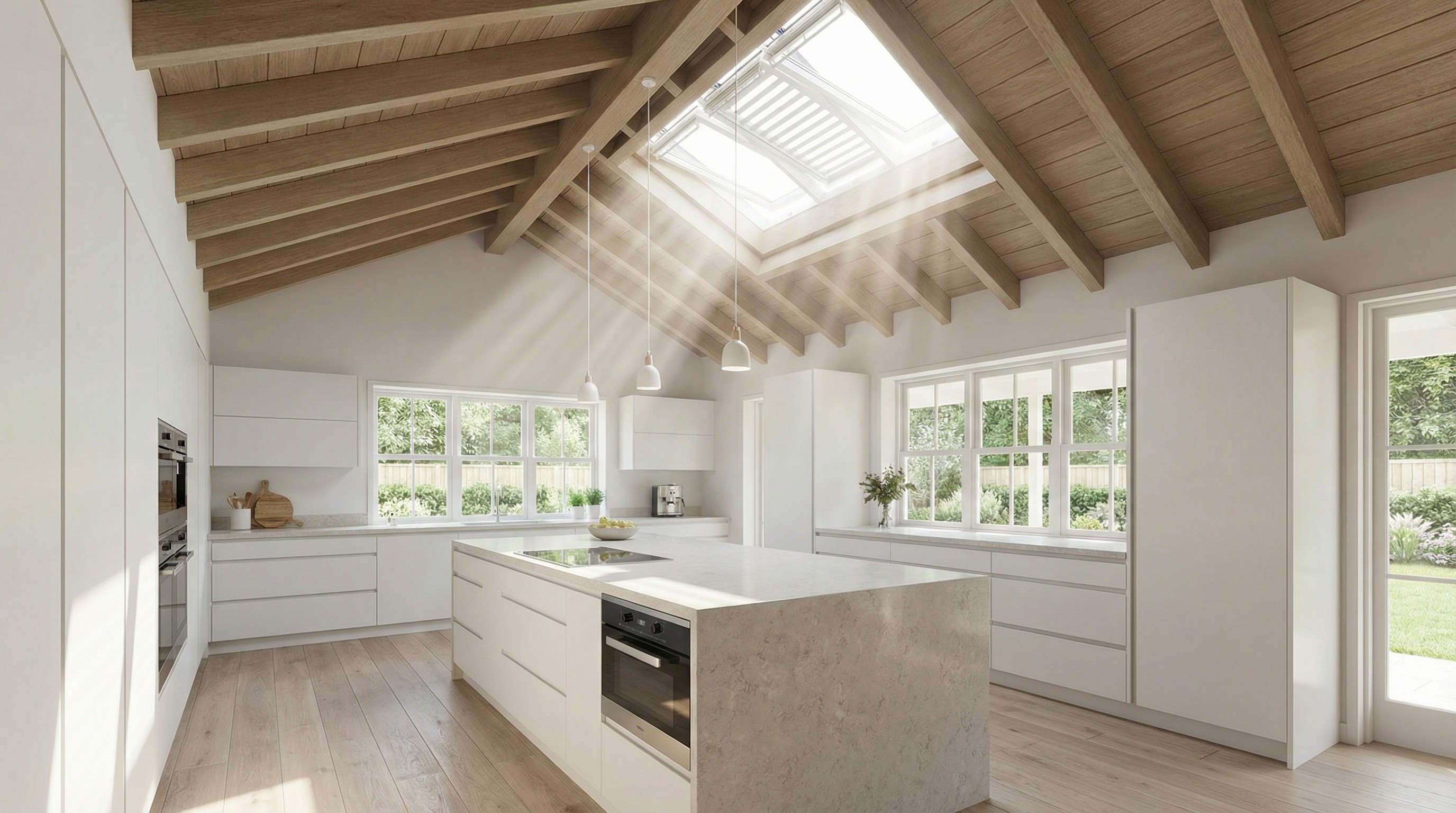
You have a few choices with vented skylights:
Manual: Opens with a hand crank, which works fine if you can reach it
Electric: Opens with a wall switch or remote control
Solar-powered: Runs on a small solar panel, so no electrical wiring is required
Solar-powered vented skylights often qualify for federal tax credits of up to 30% of the cost, which can offset some of the higher upfront cost. Check current IRS guidelines since these credits can change.
Tubular Skylights and Sun Tunnels
Tubular skylights, also called sun tunnels, are smaller and less expensive than traditional skylights. They use a reflective tube to channel sunlight from your roof down into interior spaces.
Sun tunnels work well for hallways, closets, laundry rooms, and bathrooms that do not have direct roof access above them. The tube can bend around obstacles in your attic, making installation possible in spots where a full skylight would not fit.
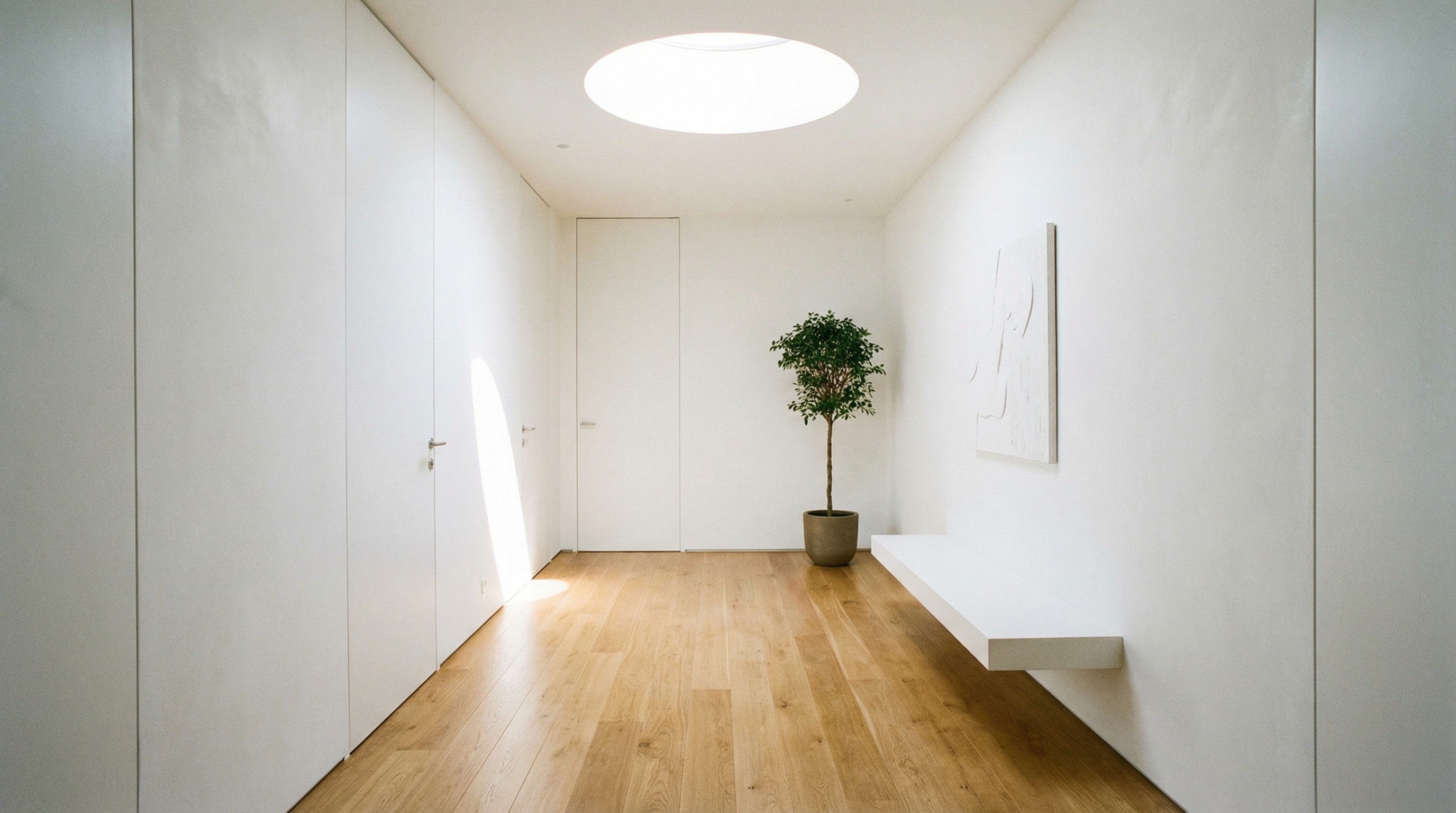
Custom and Specialty Skylights
For unique architectural situations, custom skylights exist. Pyramid skylights, dome skylights, and large multi-unit systems can create dramatic effects in the right space. However, custom options cost significantly more and require more complex installation.
Skylight Type | Opens for Ventilation | Best For | Relative Cost |
|---|---|---|---|
Fixed | No | Living rooms, bedrooms | Lower |
Vented (Manual) | Yes | Bathrooms, kitchens | Moderate |
Vented (Solar/Electric) | Yes | Any room | Higher |
Tubular/Sun Tunnel | No | Hallways, closets | Lowest |
Benefits of Adding Skylights to Your House
Skylights do more than make a room look nice. They change how a space feels and functions in practical ways.
Natural Light and Lower Energy Bills
A single skylight can transform a dark room. Natural light from above spreads more evenly than light from wall windows, reducing shadows and making spaces feel larger.
During daylight hours, you may not need to turn on electric lights at all in rooms with skylights. Over time, that reduced electricity use adds up.
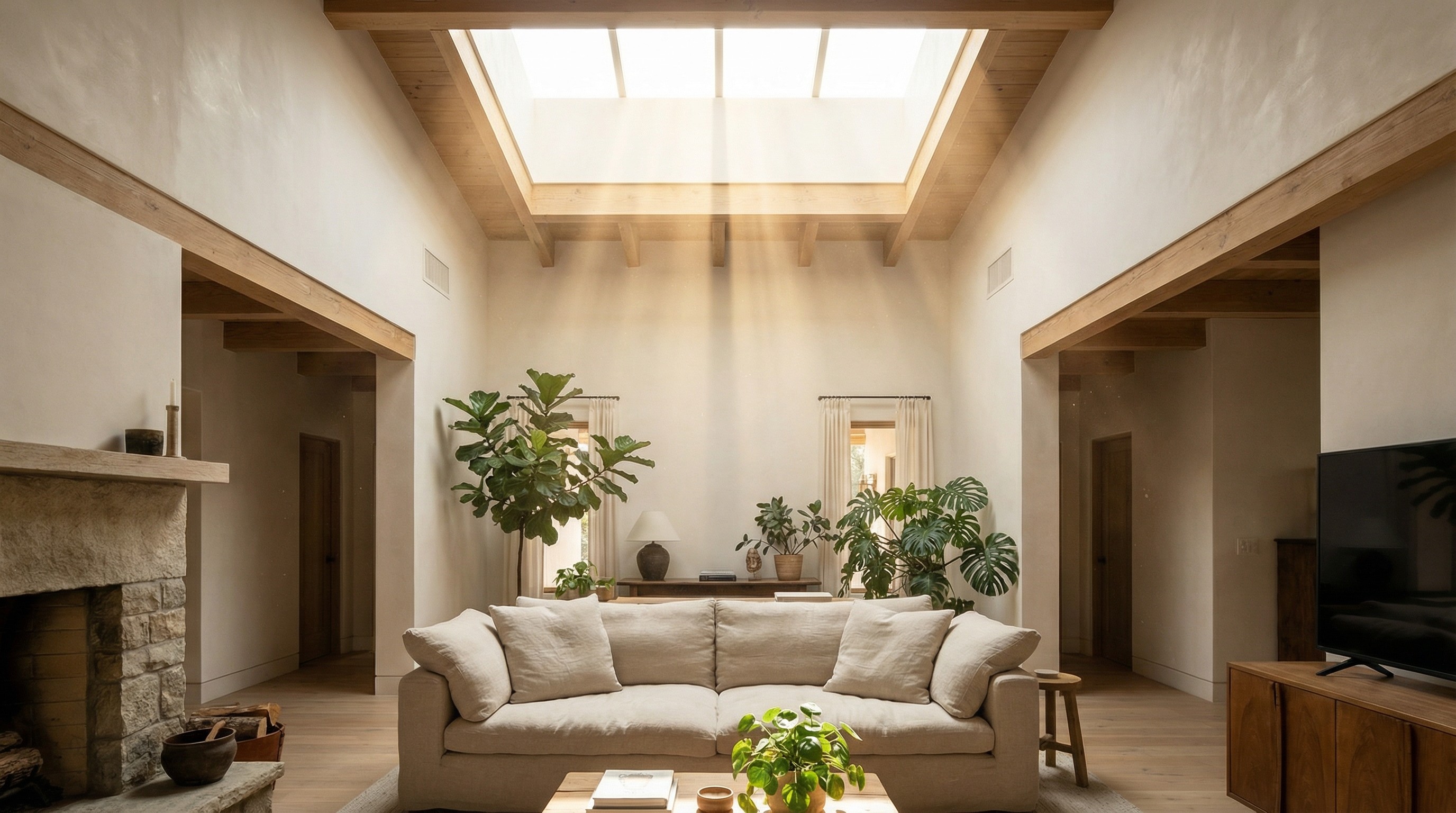
Better Ventilation and Air Quality
Hot air rises. When you open a vented skylight, warm air escapes naturally through the roof while cooler air enters through lower windows. This passive cooling effect, sometimes called the chimney effect, can reduce humidity and improve air circulation without running your air conditioner.
Bathrooms and kitchens benefit most from this feature. Moisture from showers and cooking can escape directly through the roof instead of lingering in your home.
Higher Home Value and Curb Appeal
Skylights make interior spaces feel more open and inviting. That sense of brightness appeals to buyers, which can translate to higher resale value. A dark, cramped-feeling room becomes airy and welcoming with the right skylight placement.
How Much Do Skylights Cost to Install
Cost varies quite a bit depending on the type of skylight, your roof's complexity, and how much interior finishing is required. Here is what drives the price.
Skylight Unit Prices by Type
The skylight itself is only part of the total cost. Fixed skylights typically cost $300 to $800 for the unit, while solar-powered vented models with built-in blinds can cost $800 to $2,500 or more.
Tubular skylights tend to be the most budget-friendly option overall, both for the unit and installation.
Labor and Installation Costs
Installation labor typically costs $500 to $1,500, often matching or exceeding the cost of the skylight unit itself. This is because installing a skylight involves cutting into your roof, building a frame, and installing waterproof flashing. It is skilled work that directly affects whether your roof stays leak-free for years to come.
What Affects Your Total Skylight Cost
Several factors influence your final price:
Roof pitch and accessibility: Steeper roofs or roofs that are difficult to reach safely cost more to work on
Skylight size and features: Larger units and added features like rain sensors or blinds increase the price
Interior finishing: If your skylight requires a light shaft through your attic, you will pay for framing, drywall, and painting
Existing roof condition: An older roof may require repairs before a skylight can be safely installed
Common Skylight Problems and How to Avoid Them
Skylights have a reputation for causing problems. However, most issues trace back to installation quality rather than the skylights themselves.
Leaks and Water Damage
In our experience, modern skylights rarely leak when installed correctly by qualified contractors, so water damage is typically caused by poor workmanship or outdated materials.
Flashing refers to the metal pieces that direct water away from the skylight opening. When flashing is installed incorrectly or deteriorates over time, water finds its way in. The solution is hiring an experienced roofer who knows how to waterproof the opening properly from the start.
Excess Heat Gain in Summer
A skylight on a south-facing roof can make a room uncomfortably warm during summer months. The sun beats down directly through the glass, turning your living room into a greenhouse.
You can effectively manage heat gain by selecting skylights with Low-E coated glass, which reflects up to 70% of solar heat while maintaining excellent light transmission.
Condensation and Fogging
Condensation happens when warm, moist indoor air meets cold glass. You might notice water droplets or fogging on your skylight during cold weather.
Older single-pane skylights were prone to condensation problems. Modern double or triple-pane skylights handle temperature differences much better. Adequate room ventilation also helps prevent moisture buildup on the glass.
How Skylights Are Installed on Your Roof
Understanding the installation process helps you know what to expect and why professional installation matters so much.
1. Roof Assessment and Location Planning
First, the installer evaluates your roof structure, condition, and slope. They identify where rafters are located and determine the best placement based on sunlight exposure and your interior room layout.
Not every spot on your roof works equally well for a skylight. The installer considers structural support, potential obstructions in the attic, and how light will enter the room below.
2. Cutting the Roof Opening
Next, the roofer carefully measures and cuts through your roofing material and the underlying decking. This step is why professional installation is critical. A poorly cut opening can compromise your roof's structural integrity and create leak points.
3. Framing and Waterproof Flashing
A wood frame called a curb is built to support the skylight and raise it slightly above the roof surface. Then flashing is installed around the frame to direct water away from the opening.
Flashing installation is the most important step for preventing leaks. The metal pieces overlap in a specific sequence so water always flows down and away, never toward the opening.
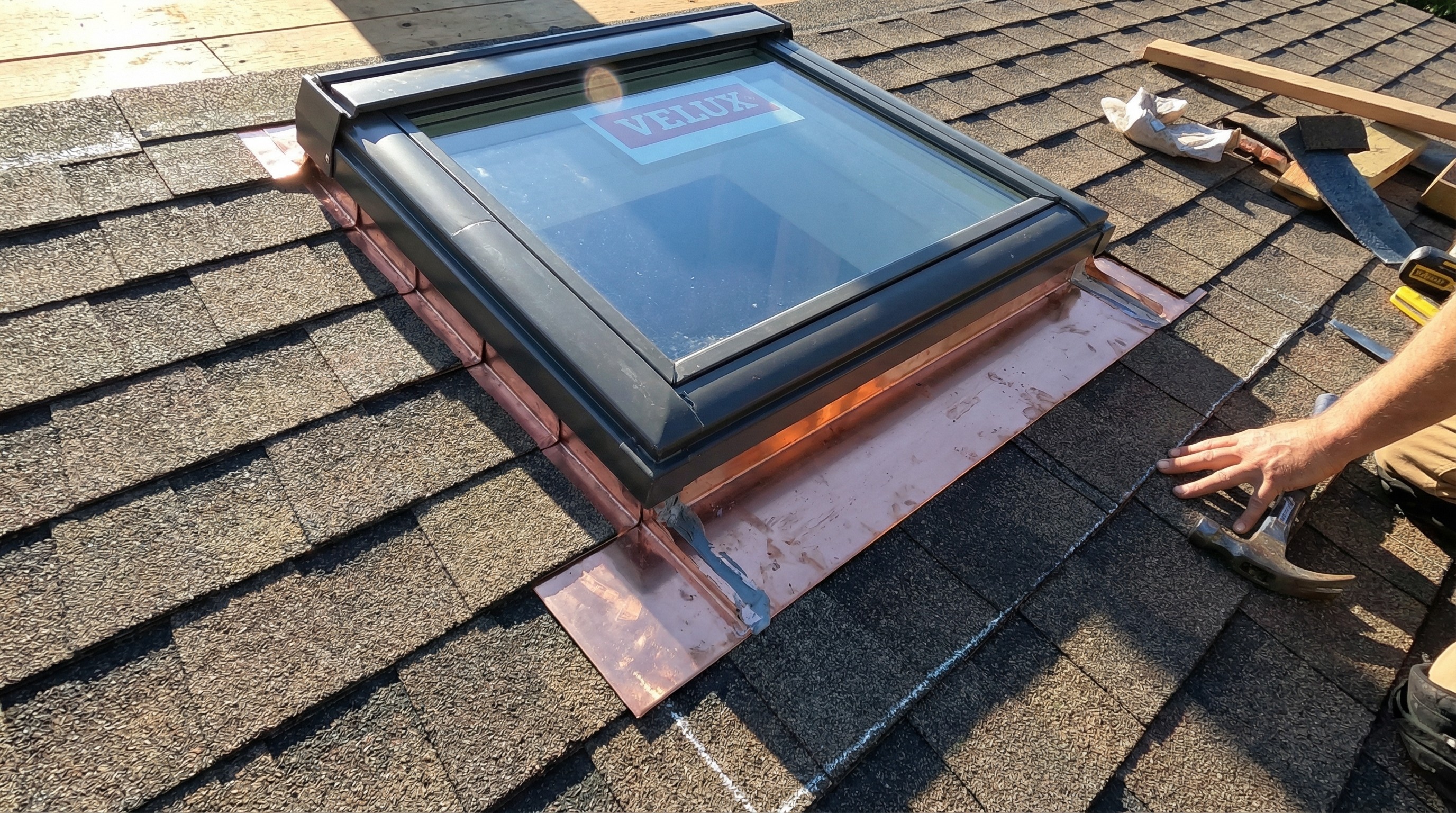
4. Setting and Sealing the Skylight
Finally, the skylight unit is placed onto the curb, secured, and sealed to be completely watertight. The surrounding roofing materials are reinstalled and integrated with the flashing for a seamless finish.
If your skylight requires a light shaft through the attic, interior finishing work follows. This includes framing the shaft, installing drywall, and painting.
How to Choose the Right Skylight for Your House
While skylight options vary significantly, focusing on a few key factors will help you make the right choice for your specific situation.
Matching Skylight Size to Room Size
A general guideline is that the skylight's glass area should be roughly 5 to 10 percent of the room's total floor area. For a 200 square foot room, that means a skylight with 10 to 20 square feet of glass.
For a 200 square foot room, that means a skylight with 10 to 20 square feet of glass.
Roof Pitch and Sunlight Direction
The direction your roof faces affects the quality and quantity of light you will receive:
North-facing: Consistent, soft, cool light throughout the day
South-facing: Most direct sunlight with highest heat gain potential
East-facing: Bright morning light
West-facing: Warm afternoon light and heat
South-facing skylights bring in the most light but also the most heat. North-facing skylights provide gentler, more even illumination.
Glazing Options for Energy Efficiency
Glazing refers to the glass or plastic pane in your skylight. The type of glazing affects energy efficiency, safety, and comfort.
Double or triple-pane glass: Provides better insulation than single-pane, keeping heat in during winter and out during summer
Low-E coating: A microscopic metallic layer that reflects heat while letting visible light through
Tempered or laminated glass: Stronger and safer than standard glass if the pane ever breaks
How to Find a Qualified Skylight Installer
Because improper installation causes most skylight problems, finding the right installer is arguably more important than choosing the right skylight.
A general contractor or window installer may lack the specialized waterproofing expertise that skylight installation requires.
When talking to potential installers, ask them to explain their flashing and waterproofing process. A confident, clear answer is a good sign. Vague responses or deflection suggest limited experience.
Next steps for getting the best value: Get multiple quotes to understand what a fair price is, and always compare services and warranties before you decide.
Are Skylights Worth It for Your Home
Skylights are not right for every situation or every budget. However, when installed properly by a qualified roofer, they add natural light, improve ventilation, and can increase your home's value.
The key is quality installation. A well-installed skylight can last 20 years or more with minimal maintenance. A poorly installed one can cause headaches for years. Comparing quotes from experienced local roofers is the best way to ensure you get fair pricing and work that will hold up over time.

